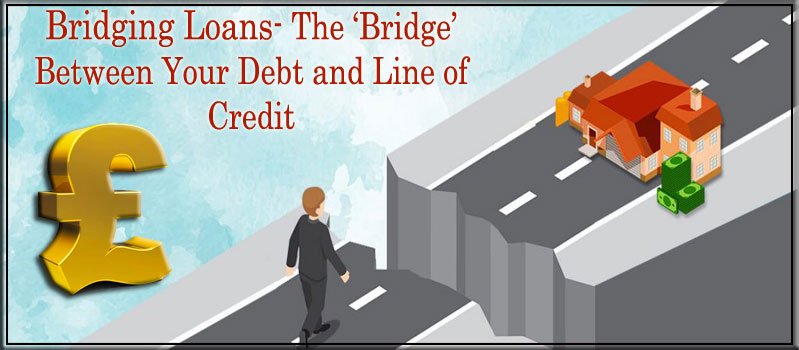Consider this situation. You have fallen in love with a beautiful house, and it is available on the market right now. You have already put your current house at sale for buyers. But the broker of the new house has given you only four weeks for the payment. You are well aware that your house would not be sold till then, and neither would the bank mortgage be approved in such short time. Paying for the entire house yourself will make you the owner of two houses for a short-time, further drowning you into debt and stress.
The Need for a Bridge
You will need money on the day you have to pay the broker (the debt). You will receive money on the day when the buyer of your house pays the amount (the credit). There is a big possibility that the two days will not clash. In fact, it is likely that your credit will be due after you have to pay your debt.
This is the situation when you need ‘bridging money’. From the time you pay for your new house, to the time the buyer pays you for your old house, a bridging loan is what keeps your finances in place. This loan simply helps you buy a new property while you are waiting for the sale of an existing one.
The Purposes Served
A bridging loan can be useful in not just one, but many situations related to property dealings. The major areas include the following:
Conversion of a residential property into a commercial one
Refurbishing a residential property to increase its market value
Buying a property to-let
Buying an auctioned property
Buying a property under market value, and selling it later to earn profit
Whatever the purpose, you might need money for a short duration of time to fill the gap between sale and purchase dates in a chain.
Attractive Features
As banks and traditional lending sources might be reluctant in approving a loan during times of financial crisis, the bridging lending market has flourished in the UK over the years.
These bridging loans are usually designed based on your amount, time and needs. This broadens the number of deals available for you across lenders. Besides the interest charged, additional charges may include administrative cost, arrangement fee, legal fee, valuation fee, exit fee and broker fee. The list varies across lenders.
The Types of Bridge
There are two types of bridging loans available in the lending market.
1. Open bridging loans: They have no pre-decided date of repayment. You are free to pay when funds are available to you, and the term can even extend to a year or more.
2. Closed bridging loans: They come with a fixed term, and you are required to pay back the amount that day itself. This loan is availed when you are certain when your money will come through. The term usually lasts for just a few weeks or months.
For the flexibility and higher risk involved with open bridging loans, they have a higher rate of interest and are more expensive than the closed loans.
The Exit Route
An important pre-requisite before taking a bridging loan is to be certain of your repayment strategy. Once you have taken a loan for a property transaction chain, a bank would be resistant towards giving you a mortgage on that property.
You must be certain about the incoming funds to pay off the bridging loan you are hoping to apply for. Failure to repay the loan can lead to repossession of your property by the lender. You might actually end up losing your property and paying huge charges as well.
Plan an ‘exit route’ to repay your loan in all circumstances possible. When you are confident enough to make the repayment of the loan, should you apply for one.
The CHARGE of a Bridge
A bridging loan comes with a charge associated with it in case the borrower defaults on the repayment. The type of charge prioritises repayment if you fail to repay the loan. This is associated with the property you currently own, which is a security to the lender in case of a bridging loan. There are two categories of charge loans.
1. First Charge Loans: This means that this bridging loan is the first borrowing against your property and no other mortgage is pending against it.
2. Second Charge Loans: This reflects that you already have an ongoing mortgage against your current property, and a bridging loan would be the second borrowing.
When a borrower defaults on a loan and a property is sold to recover the money, the first charge is paid off first on priority basis.

